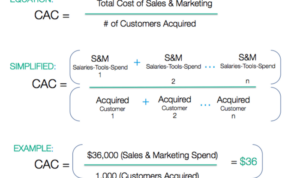Multi-Channel Marketing sets the stage for this enthralling narrative, offering readers a glimpse into a story that is rich in detail with american high school hip style and brimming with originality from the outset.
In today’s digital world, businesses need to navigate various marketing channels to reach their target audience effectively. Multi-Channel Marketing, a key strategy in this landscape, involves utilizing multiple platforms to engage customers and drive sales. Let’s dive into the world of multi-channel marketing and explore its significance, strategies, challenges, and data analysis.
Overview of Multi-Channel Marketing

Multi-channel marketing is a strategic approach that involves using multiple channels to reach and engage with customers. In today’s digital landscape, where consumers are active across various platforms, multi-channel marketing has become essential for businesses to connect with their target audience effectively.
Examples of Different Channels
- Social Media: Platforms like Facebook, Instagram, Twitter, and LinkedIn
- Email Marketing: Sending targeted emails to customers and prospects
- Search Engine Marketing (SEM): Using paid search ads to reach potential customers
- Mobile Marketing: Targeting users on mobile devices through apps, SMS, or mobile websites
Benefits of Multi-Channel Approach
- Increased Reach: By utilizing multiple channels, businesses can expand their reach and connect with a wider audience.
- Improved Engagement: Engaging with customers through different channels allows for more personalized interactions and better customer relationships.
- Enhanced Brand Visibility: Being present on various platforms increases brand visibility and recognition among consumers.
- Optimized Conversions: By offering a seamless experience across channels, businesses can guide customers through the buying journey more effectively.
Strategies for Implementing Multi-Channel Marketing

To create a successful multi-channel marketing strategy, it is essential to ensure that all channels work together seamlessly to deliver a consistent brand message and customer experience. Consistency in branding, both online and offline, is key to building trust and recognition with your target audience. Integrating online and offline channels effectively can help you reach a wider audience and drive more conversions.
Creating a Cohesive Strategy
- Define Your Goals: Clearly Artikel your objectives and what you hope to achieve through your multi-channel marketing efforts.
- Know Your Audience: Understand your target market and tailor your messaging to resonate with them across all channels.
- Utilize Data: Use customer data to personalize your marketing efforts and deliver relevant content to each segment of your audience.
- Consistent Branding: Maintain a unified brand voice, visual identity, and messaging across all channels to reinforce brand recognition.
Importance of Consistent Branding
Consistent branding helps build trust and credibility with your audience, as they will come to recognize and associate your brand with a specific set of values and qualities. Whether a customer interacts with your brand online or in-store, a consistent brand experience will create a sense of reliability and professionalism.
Integrating Online and Offline Channels
Integrating online and offline channels involves creating a seamless experience for customers as they move between different touchpoints. This can be achieved by:
- Using QR codes or NFC technology to link print materials to online content.
- Implementing geotargeted advertising to drive foot traffic to physical locations.
- Offering online ordering with in-store pickup options to bridge the gap between online and offline sales channels.
Challenges of Multi-Channel Marketing
Implementing multi-channel marketing campaigns comes with its fair share of challenges. One common issue faced is the difficulty of ensuring a consistent brand message across all channels while adapting to the unique characteristics of each platform. Additionally, managing customer data and interactions seamlessly across multiple channels can be a daunting task.
Data Synchronization Across Channels
When it comes to data synchronization across channels, the main challenge lies in ensuring that customer information is up-to-date and consistent across all touchpoints. This can be particularly challenging when dealing with siloed data systems or disparate sources of information. To overcome this hurdle, companies can invest in integrated CRM systems that centralize customer data and enable real-time updates across all channels. By implementing robust data management processes and leveraging automation tools, businesses can streamline data synchronization and ensure a unified customer view.
Managing Customer Experiences Across Channels
Another key challenge in multi-channel marketing is managing customer experiences seamlessly across different channels. Customers expect a consistent and personalized experience regardless of the channel they choose to engage with. To address this challenge, companies can focus on creating an omnichannel strategy that integrates all touchpoints and provides a cohesive customer journey. By leveraging technologies like AI and analytics, businesses can track customer interactions across channels, anticipate their needs, and deliver relevant content in real-time. This personalized approach can help enhance customer engagement and loyalty, ultimately driving better business outcomes.
Data Analysis in Multi-Channel Marketing
Data analytics plays a crucial role in optimizing multi-channel marketing efforts by providing valuable insights into customer behavior, preferences, and interactions across various channels. By analyzing data effectively, marketers can better understand their target audience and tailor their messaging and campaigns to meet their specific needs and interests.
Tools and Techniques for Measuring Marketing Channel Performance, Multi-Channel Marketing
Utilizing the right tools and techniques is essential for measuring the performance of different marketing channels. Here are some commonly used methods:
- Google Analytics: This tool helps track website traffic, user engagement, and conversions, providing valuable data on the effectiveness of each channel.
- Customer Relationship Management (CRM) software: CRM systems allow marketers to analyze customer interactions, preferences, and purchase history across multiple channels.
- A/B testing: By conducting A/B tests, marketers can compare the performance of different marketing strategies and channels to determine the most effective approach.
Examples of Data Analysis in Refining Marketing Strategies
Data analysis can help refine multi-channel marketing strategies in various ways, such as:
- Segmentation: Analyzing customer data can help identify specific segments with unique preferences, allowing for personalized messaging and targeted campaigns.
- Attribution Modeling: By using attribution models, marketers can determine the contribution of each channel to conversions, enabling them to allocate resources effectively.
- Optimization: Continuous analysis of data can help marketers identify underperforming channels and optimize their strategies for better results.





